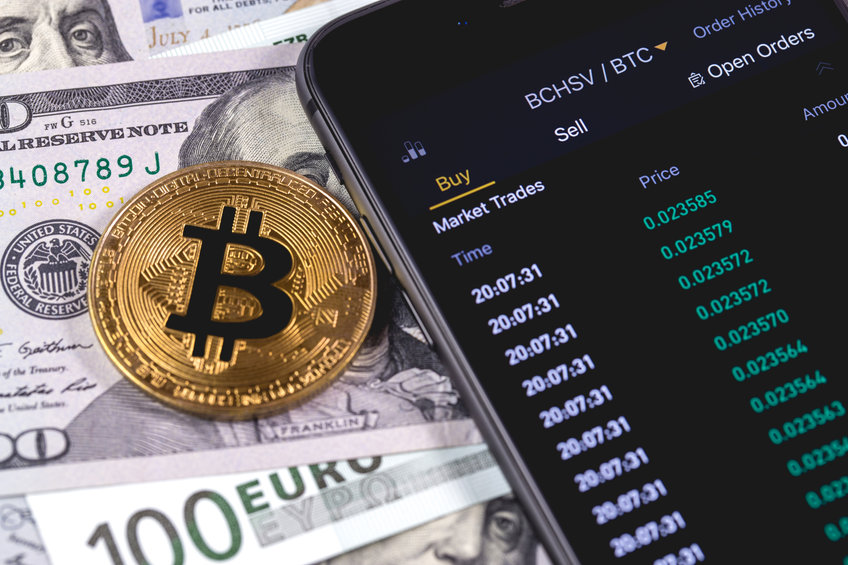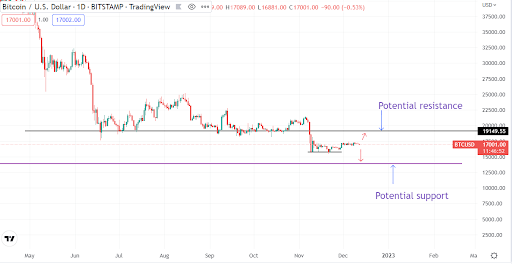
-
Bitcoin lost 1% on Monday ahead of the US inflation data.
-
A crypto analyst expects the inflation data and Fed’s meeting to affect Bitcoin.
-
Bitcoin lacks a directional bias and could move in any direction.
Bitcoin (BTC/USD) traded down more than 1% on Monday, with the cryptocurrency’s price slightly below $17,000. Bitcoin has traded at this level since the start of the month. The price is also slightly improved from $16,000 at the end of November. But should we expect this price to improve?
The limited upside in Bitcoin perhaps underlines that investors are still cautious about buying cryptocurrencies. That means a significant number expect Bitcoin to fall further as risk-on sentiment remains. Similarly, buyers are defending the $16,000 level. But as this bull-bear scenario unfolds, a popular crypto analyst expects two macro events to crush BTC further. The analyst, Nicholas Merten, says markets are warming up for the US inflation report and the Fed’s last meeting of the year.
The US inflation report comes on December 12th, followed by the Fed’s meeting on December 14th. Higher-than-expected inflation is likely to raise speculations of policy tightening by the Federal Reserve. The analyst says already 80% of the market expects the Fed to hike rates by 50 basis points. If inflation comes hot, this will call for faster hikes.
Even if the Fed does not embark on fast rate hikes, Merten says markets will still be under pressure. The analyst says the lagging effects of previous policy actions could last longer.
BTC on a slight upside amid weak momentum
On the technical front, BTC trades within narrow ranges. The long-term momentum is bearish, although the cryptocurrency recovered slightly above $16,000. BTC’s next resistance lies at $19,000, while the support is at $14,000.
Will BTC go lower or higher?
A limited upside means that Bitcoin price could trade lower if the macro factors are not positive. Investors will monitor the inflation report and the Fed’s action for indicators of where BTC will go next.


